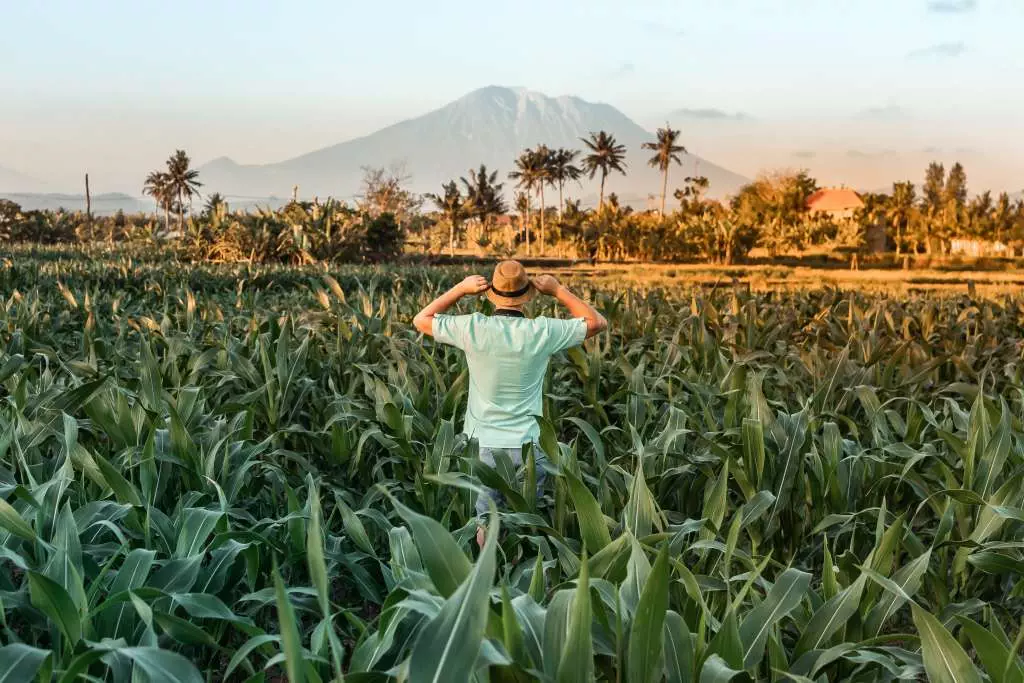Overall context
Today, the global community is facing two interconnected challenges of climate change and food insecurity. Out of 6 billion population of the world as estimated by FAO in 2010, nearly 925 million people are chronically malnourished. In developing countries, the agriculture sector must reorient and transform in order to ensure food security in changing the climatic pattern. By 2050, the global population will grow more than 9 billion (UNESCO, 2012).

Regardless of the limited availability of agricultural land, freshwater for agriculture use, and impacts of climate change, the agriculture sector has to feed 9 billion people that are going to inhabit on Earth by 2050. Therefore, there is a dire need to strengthen our farming system as directly or indirectly most of the people in developing countries get their livelihoods from agriculture. By the year 2050 food production must increase by 70% to feed 9 billion people hence agriculture sector is going to face an even greater challenge.
Though there is a significant shift in seasonal conditions but researchers concluded that crop yield will not promptly reduce by 2050 but, some of the regions may face pressure on smallholder agriculture and many others are likely to face weather shocks in near future.
Globally,12 regions including Sub-Saharan and South Asia are worst affected by climate variability and declared as food-insecure regions. There are rainfall volatility, increased drought, and rising temperatures due to climate changes, which is affecting crop yields. Up to 2030, mean temperature and/or rainfall or both could affect food security especially in Sub-Saharan and South Asia. Disease and pest manifestation may also jack up by the climatic variability that will aggravate food insecurity.
Therefore, the need of the hour is to fight the challenges of climate change to ensure food security for the population especially in Africa and South Asia. Climate change and food security have become a burning issue and tangible measures have been made to strengthen the agriculture sector. Both adaptive and climate change mitigation projects are funded by international agencies in developing countries. But the effective use of these funds is its self a great challenge. Impacts of policies, knowledge on tradeoff, synergism between mitigation and adaption, and food security are needed to be addressed.
Climate-smart agriculture
Climate-smart agriculture (CSA) is a strategy to ensure sustainable food security under climatic variability. A short and long term priorities can be achieved through this approach; hence it may bridge the gap for other developmental priorities. It provides an action guide for the reorientation and transformation of the smallholder agriculture sector in changing the climate. CSA mainly focuses on sustainable crop production, climate change resilience, and mitigation of greenhouse gases. CSA seeks to support the farming community and stakeholders to identify suitable land management practices (SLM) for their locality in order to make the best use of the inputs. CSA is a way to ensure the integrated use of land, water, and ecosystem. While making planning for agriculture development and investment, food security and climate change resilience strategies should be directly incorporated. Here are some strategies that can be adapted to make effective use of resources to fight against issue related to climate and food insecurity:
Strategies
We should promote the use of agroforestry and conservation agriculture to minimize soil degradation and to improve soil fertility. At the same time, agroforestry will increase profitability and will strengthen our socio-economic values as well.
CSA constitutes such approaches that can not only increase soil carbon pool but are tested against their potential to amplify yield and profitability given the expected climate impacts.
Policymaker and stakeholder must join their hands to make our food production system more efficient and to improve our natural resource management to ensure food security.
Our priority should not be industrializing agriculture but to develop the farming system more sustainable, profitable, and efficient.
Data-centric technologies must be used rather we look for some kind of revolutions.
We should re-interpret our smallholder agriculture and these re-interpretations should be practicable in rural areas with some new vision.
We should re-design our agro-ecological zone on the basis of competitive advantages.
Keeping in view the temperature, precipitation, soil and other factors in view farmers should re-plan cropping schemes best suited for their areas.
Re-orientation of the agroecological zone will amplify per-acre productivity and yield.
There is dire need to address water abuse and misuse to increase water use efficiency by crops.
Serious efforts are needed on the part of researchers, agriculturists, educationists, and economists as well.
The viable solution should be put forward to the jack-up agriculture sector and farmer living standard.
We should encourage farmers to adopt mechanized farming.
Awareness should be made among the farmers about the effective and wise use of available resources.
Step-up and effective efforts are needed at the national level to cope up with food insecurity.
We should develop genetically modified crop varieties that are able to sequester more carbon and give more yield along with GHGs mitigation.
Actual and potential increase in financial resources will lead to more profitable, productive, and sustainable agriculture set up while addressing climate change.
Empirical evidence concerning cost-benefit ratio and constraints in adaptation should keep under consideration.
Conclusion
CSA “triple win” strategy should be adopted but one must not ignore the fact that the cost of smart agriculture is high but it certainly doesn’t mean that precision agriculture is impractical for smallholder agriculture. Where the agriculture sector is worst affected by climate variability there it is emitting 14% of the total GHGs in the environment. Deforestation and land deterioration are responsible for an additional 17% of emissions. crops’ shift is being witnessed. if we could not take the measures to fight the challenges facing the sector, it will face a setback. Therefore, before it’s too late we should take a timely decision.
Author:
Ayesha Irum and Muhammad Ehetisham ul Haq
The University of Agriculture
Faisalabad, Pakistan
